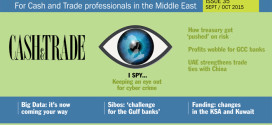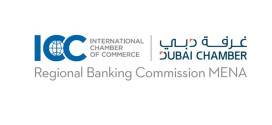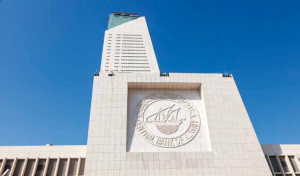
How things are changing in the capitals of Saudi Arabia and Kuwait… MUSHTAK PARKER explains why
The tiresome mantra was: “Oh we do not need to borrow money from the markets, because we are flush with liquidity. We pay everything in cash.”hese are extraordinary times in the corridors of power in Riyadh and Kuwait City. Gone is the exuberance, and some would say complacency, of yesteryear, when ministers and officials from the two countries would scoff at the mere idea of the two governments going to financial markets to borrow funds on a regular basis to finance public expenditure and budget shortfalls primarily due to the cyclical downturn in crude oil prices.
Perhaps these countries, like others in the Gulf Cooperation Council (GCC) region, are finally catching up with the vagaries of real economics. But certainly news that the Saudi Arabian Monetary Agency (SAMA), on behalf of the Ministry of Finance, raised SR15bn through the sale of bonds in July 2015 to qualified private institutional investors in the Kingdom and with more such issuances on the cards – and that a draft Sukuk law is currently awaiting debate and approval in the Kuwaiti Parliament – must be warming the sinews of both conventional and Islamic investors and, in the process, give a potentially much-needed fillip to the local debt and capital markets, including the burgeoning Sukuk sector.
The good news is that SAMA’s July public borrowing foray does not appear to be a one-off and is, perhaps, a sign of times to come especially in a relatively low-oil-price environment.

“There will be several tranches of bond issuance in the coming months to mitigate for the low oil price as well as fill the gap in the budget deficit that would rise above 20 per cent this year. If there is no bond issuance, the fiscal deficit must be covered almost dollar for dollar by drawing down reserves,” explained John Sfakianakis, Middle East director at the Ashmore Group.
SAMA, of course, could have dipped into its substantial holdings/reserves, but has opted to issue bonds instead. According to the latest data from the Las Vegas-based Sovereign Wealth Funds (SWF) Institute, assets under management (AUM) of SAMA’s Foreign Holdings totalled $757.2bn in July 2015.
Only the Norway Government Pension Fund with AUM totaling $882bn and Abu Dhabi Investment Authority with AUM at $773bn have higher holdings. SAMA is followed by the China Investment Corporation with AUM totaling $746.7bn, and the Kuwait Investment Authority (KIA), with assets under management at $592bn respectively.
But according to Ashmore’s Sfakianakis, “there has been a substantial dipping in foreign reserves this year by the Kingdom and there has to be an alternative to balance the fast depletion of foreign reserves. Debt issuance is one way if spending is not curtailed or oil prices don’t rise.”
While the 2015 Saudi budget factored in a revenue shortfall of SR145bn for this fiscal year, others such as the International Monetary Fund (IMF) emphasise that the deficit could be higher than SR150bn especially if oil prices persist on a downward trend. In early August, for instance, Crude Oil Brent for 3-months delivery was quoted at $48.61 per barrel, compared to $68.3 per barrel in early June.
In the Fiscal Year 2015 National Budget statement, SAMA emphasised that total revenues are estimated at SR715bn ($190.7bn); government expenditures are budgeted at SR860bn ($229.3bn); and the fiscal deficit is projected at SR145bn ($38.6bn), which represents 5.2 per cent of Gross Domestic Product (GDP).
Perhaps it is quite revealing that there was no mention in the budget statement of any public borrowing ambitions or debt issuance plans going forward. But then SAMA is not known for its culture of disclosure and transparency.
What is clear is that Riyadh is under increasing political pressure given the stated aim of the budget is “to focus on priority investment programmes that enhance sustainable and strong economic development and employment opportunities for Saudi nationals.”
Sfakianakis emphasised that if oil prices continue to slide further forays into the debt market is inevitable. “This year’s budget deficit would probably reach a two-decades high and it’s expected that foreign reserves would fall to $630bn from a high of $732 end of 2014. In order to slowdown the draw down in foreign reserves, bonds have to be issued,” he added.
What is not clear though is whether the SAMA fund raising exercise comprised only conventional interest-based bonds or whether it also included asset-backed or based Sukuk (Islamic trust certificates), which are erroneously referred to as Islamic bonds.
The SAMA bonds were placed privately and confidentially. The Saudi banking regulator, according to financial market sources, has not announced any details about the bond issuance and the market would need to have received additional details on the tenor and pricing. Local reports suggest that the papers issued were conventional bonds. The last time the Saudi government issued a bond was in 2007.
While SAMA has actively encouraged Saudi government agencies and companies, and local corporates to raise funds through the issuance of Sukuk to help develop the Islamic capital market; to diversify sources of funding; and to raise funds more competitively and cost-effectively especially compared with more costly bank finance; sovereign Saudi Arabia has strangely stayed away from issuing true sovereign Sukuk offerings.
Muhammad Al-Jasser, former governor of SAMA and erstwhile Saudi minister of economy and planning until the recent cabinet reshuffle in April 2015, has been a major supporter of Sukuk issuance in the Kingdom.
In a past interview he said, “Sukuk have a very great potential in the Saudi and GCC market. The Saudi market is moving from traditional sources of financing such as bank credit to corporate bond and Sukuk. The banks may not be able to meet local funding requirements from traditional sources given the rapid expansion of infrastructure and projects in the Saudi economy. But this also depends on the demand and supply dynamics of the market. We would like to see the local credit market diversified from bank finance to corporate bonds and Sukuk.”
In contrast, his successor at SAMA, governor Dr Fahad bin Abdullah Al-Mubarak, has been very coy about government borrowing whether through conventional bonds or Sukuk, let alone the role of Islamic finance in the Kingdom’s financial sector and economy.
However, behind the scenes, SAMA has been proactive, establishing a regular high-powered Islamic Finance Committee at the central bank, especially in the light of the massively proliferating Sukuk market in the Kingdom, the second largest such single market after Malaysia and ahead of the UAE.
Saudi government officials have hitherto dismissed calls for the issuance of true sovereign Sukuk whether for benchmark purposes or for helping to create a yield curve for future such government Shariah-compliant debt paper issuances.
Several of them have emphasised that issuances by quasi-sovereign entities such as GACA (General Authority for Civil Aviation), which has issued two of the largest Sukuk offerings in the global market to date to fund the building of airport infrastructure in Jeddah and Madinah; the four Sukuk issuances by SABIC (Saudi Basic Industries Corporation); and by other entities such as Saudi Electricity Company and several subsidiaries of Saudi Aramco, the national oil company; would suffice in creating a benchmark and contribute towards developing that elusive yield curve.
However, if this was the case, why the need to issue sovereign conventional bonds? A conventional bond yield curve could easily have been developed through encouraging quasi-sovereigns and local corporates to issue conventional bonds. This anomaly has more to do with the politics of Islamic finance in the Kingdom than with the bond market dynamics.
But Saudi-based bankers such as Sfakianakis hint that the government and SAMA are aware that irrespective of budget deficits and a low-oil-price environment, the Kingdom should issue debt papers whether bonds and/or Sukuk fairly regularly to establish a reliable yield curve. After all, the infrastructure spend in the Kingdom alone is estimated at hundreds of billions of dollars over the next decade or so and this cannot be funded primarily through the budget and through oil revenues.
“There is a need for a yield curve and the only way that it can be established by a regular and sizeable issuance of bonds. There is serious realisation of this and SAMA is working towards that direction. The recent issuance of bonds is geared with that in mind,” he maintained.
Compared to developed economies, including the US, UK, France and Italy, Saudi Arabia’s ratio of public debt to GDP is miniscule. For Fiscal Year 2014, this totalled a mere 1.6 per cent. The Kingdom’s outstanding public debt at the end of 2014, according to SAMA data, amounted to a modest SR44.26bn, down from the SR60.118bn at end 2013. The government also has a proactive debt repayment programme, paying back SR15.858bn in 2014.
A marginal downgrade of Saudi Arabia’s sovereign rating outlook by Standard and Poor’s (S&P) from “Positive” to “Stable”, albeit the actual sovereign rating remained unchanged at (AA-), will not affect the Kingdom’s public fund raising capacity and attractiveness.
Although S&P lowered the outlook for Saudi Arabia, it stated in its rating rationale that real economic growth remains relatively strong. A similar assignment by Fitch Ratings in March in fact upgraded both the outlook and actual rating of the Kingdom.
In its Financial Stability Report 2015, SAMA acknowledged that the “Saudi economy is currently confronted with the prospect of a sustained downward pressure on oil prices emanating from two different sources. First is the possibility of a prolonged period of depressed oil prices caused by the overproduction of oil by non-OPEC suppliers and/or lower oil demand as a result of slow growth rates especially in emerging markets. Second, the prospective normalisation of global interest rates, might cause financial turbulence in world markets and result in a protracted period of slower global growth, resulting in lower oil demand and weaker prices.”
While the Kingdom as “swing producer” has aptly coped with such depressed oil price scenarios in the past, SAMA is confident that the impact of normalisation of global interest rates on the Saudi economy and banking sector is expected to be limited.
The rationale behind this optimism is implicit and the main reasons poignantly breathtaking. “A US normalisation that manifests itself as a hike in the US policy interest rate,” said the report, “would tend to raise short-term interest rates in Saudi Arabia primarily owing to the exchange rate peg in place.”
However, a high level of liquidity in the Saudi banking system and the structure of funding channels that is skewed towards non-interest bearing deposits (in other words Islamic banking deposits) “would moderate its transmission to bank lending rates and hence tone down its adverse impact on bank credit and real GDP growth. In addition, such normalisation will most likely be gradual giving the financial sector enough time to adjust to any moderate hikes in interest rates”.
Saudi banks indeed are amply endowed with liquidity to invest in government debt instruments.
According to SAMA data, bank deposits totalled SR1.58 trillion at end 2014, of which a staggering 71 per cent constituted non-interest (Islamic) deposits, which in turn was the primary source for the banks’ direction of funding.
Similarly, given the preference of Saudi issuers, including quasi-sovereign ones, for Sukuk in the last three years what would be a more conducive public borrowing strategy – an active government Sukuk issuance programme or a conventional bond issuance programme or a mixture of the two?
“This,” explained Sfakianakis “depends on the direction of borrowing and creditors. For local and regional creditors a combination of Sukuk and conventional issuance is prudent. Beyond the region, and for international creditors, conventional issuance would make more sense.”
Issuing sovereign bonds and Sukuk also is not a matter of public borrowing per se. Government papers are crucial in developing a money market and to act as a market maker for domestic short-term liquidity management instruments and, in the case of Islamic finance, an Islamic interbank scheme.
Usually this is done on a conventional paper (mainly repo) basis, which deprives the Islamic finance sector of crucial access to such instruments because they are not Shariah-compliant especially when these institutions park their statutory reserves and capital with SAMA. Neutrality and parity of treatment by regulators of both conventional and Islamic banking sectors is crucial for the orderly development of the financial system especially in Muslim countries, where both banking products are offered.
SAMA and the Central Bank of Kuwait (CBK) stand out as the two important banking regulatory authorities in the OIC countries that have thus far desisted from issuing any Shariah-compliant commercial papers – local currency issuances or international ones.
In contrast, Malaysia regularly issues government Islamic notes, Islamic private debt securities, MTNs, Sukuk either by the Ministry of Finance through Bank Negara Malaysia or by Cagamas, the state-owned Malaysian Housing Finance Corporation, one of the largest issuers of Sukuk and arrangers of Islamic mortgage securitisation in the country if not the world.
However, given the political and economic travails currently in Malaysia, especially the sharp appreciation of the Malaysian ringgit against the US dollar and the continuing fallout from the IMDB sovereign wealth fund scandal, Bank Negara Malaysia, the central bank, reportedly has put a dampener on issuance of government papers, including Sukuk, at least for the near future.
By far the most prolific sovereign domestic Sukuk issuer in the GCC is Bahrain, where the Central Bank of Bahrain (CBB) has pioneered the zero coupon Sukuk Al-Salam in addition to domestic and international sovereign Sukuk Al-Ijara, all of which are issued by the CBB on behalf of the government of the Kingdom of Bahrain and are listed on the Bahrain Stock Exchange.
In July this year, the CBB has sought to diversify the maturity profiles of its monthly Bahraini dinar Sukuk issuances. Hitherto the tenors have been short term ranging from one month to six months to one year. Earlier this year the CBB issued a BD100 million Sukuk with a tenor of three years and a profit rate of three per cent per annum. In July, the central bank went even further issuing a BD200 million Sukuk Al Ijara with a tenor of 10 years maturing on 9 July 2025.
The reasons are manifold. The CBB wants to inject volume and maturity diversity into its Sukuk issuance programme and in the process also build up a longer-term yield curve for such issuances. This new strategy also brings the CBB on par with other regular issuers of sovereign domestic Sukuk issuers such as Malaysia, Indonesia, Turkey, Pakistan, Sudan, Brunei, Qatar and, more recently, Bangladesh, whose maturity profiles are more diverse than those of the Bahraini Central Bank.
However, another OIC member country, Indonesia, the most populous Muslim nation, is, in fact, starting to overtake Malaysia and Bahrain in issuing regular tranches of domestic Sukuk primarily to promote liquidity management requirements of Islamic banks and financial institutions licensed in their jurisdictions and to provide Shariah-compliant avenues to park reserve requirements under the Basel II & III capital adequacy requirements.
In fact, the government of Indonesia issued sovereign domestic Sukuk in the Indonesian Rupiah (IDR) with an impressive total of IDR12.42 trillion raised in the period April to July 2015 alone.
The latest auction held by the Bank of Indonesia on behalf of the Ministry of Finance Indonesia raised IDR2.93 trillion through its latest four offerings of domestic Sukuk tranches under its regular Government Shariah Securities (GSS) series on 28 July 2015.
On the other hand, Kuwait, which authorised one of the earliest and pioneering commercial Islamic banks, namely Kuwait Finance House (KFH), as early as in 1977, has ironically been absent from the Sukuk market to date.
In the past, forays into equity-based asset management and the debt capital market would have been unthinkable because of KFH’s seemingly innate puritanism and conservatism as far Shariah-based investments are concerned and the slow and adversarial wheels of decision-making by the Kuwaiti powers-that-be, whether the Emiri Court, the government, the Central Bank of Kuwait (CBK), the Capital Markets Authority (CMA) and the National Assembly,
This put paid to any chance of Sovereign Kuwait going to the international market to raise funds through a debut Sukuk Issuance.
However, there seems to be a moral ambiguity on the part of the Kuwaiti government and national assembly with regards to its public borrowing policy. For year-to-date June 2015, sovereign Kuwait actually issued 16 conventional bonds raising $3.2bn in the process, second only to the UAE’s $8.6bn worth of bonds.
According to Issam Al Tawari, chairman and managing director, of Kuwait-based Rasameel Structured Finance, the emirate withdrew from sovereign borrowings in general and not only from the Sukuk market for more than 10 years and relied on budgetary allocations for financing its projects and economic needs.
“There was a general policy at that time to pay out all external debt and not go to the market to borrow funds. Hopefully, with the current oil price level (and the anticipated budget deficit) this would establish a clear financing strategy for the country going forward,” he added.
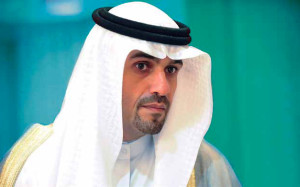
But now times and policies are indeed changing. No less than that new-found Kuwaiti Twitterati, Finance Minister Anas al-Saleh, tweeted at the end of July that the emirate is preparing legislation in the National Assembly to facilitate the issuance of sovereign Sukuk, not surprisingly as an option to finance an anticipated KD8.18bn ($27bn) deficit in the 2015 Budget due to the fall in oil prices. The problem is exacerbated by the fact that oil revenues account for 90.3 per cent of government revenues, making it one of the most heavily crude oil-dependent economies in the Middle East & North Africa (MENA) region.
Finance Minister al-Saleh confirmed that getting the Sukuk legislation passed in the National Assembly is “one of the priorities” of the Government going forward.
But with the real prospects of hitherto unthinkable measures such as a rise in the petrol price and the lowering of energy, food and other subsidies, the financing of the budget deficit has suddenly become a political hot potato with the potential of creating problems for arguably the most fragile of the Gulf monarchies and a population nurtured since independence on an over-generous welfare system.
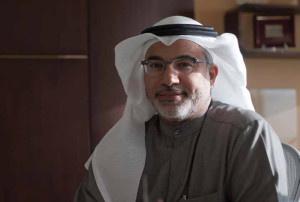
But Islamic bankers such as Rasameel’s Issam Al Tawari are a bit more cautious and for good reasons. “The Sukuk law in Kuwait,” he explained, “has been under discussion for quite some time. However, there was no real need to raise funding in the past, but with the drop of oil prices to around the $50 per barrel level, it became crucial to put the Sukuk legislation on the fast track. The draft law is currently with the National Assembly, which may debate the legislation during Third Quarter 2015 when it reconvenes.”
He believes that it is vital for a Sovereign Kuwait Sukuk to be issued in the sense that it will enhance pricing efficiencies by defining the lower end of the market yield curve and setting the market expectations on profit rates, which is fundamental to the pricing of fixed income securities, from government securities, to basic corporate bonds, to highly structured issuances.
But he remains sceptical whether sovereign Kuwait would issue a Sukuk this year. “I do not think that there will be any issuances of Sukuk prior to passing of the proposed Sukuk Law, so in all likelihood there will be no Kuwait sovereign Sukuk before next year at the latest,” he advised.
In theory, both sovereign Kuwait and local corporates can issue onshore Sukuk in the local market based on the amendments to the Bond Issuance Law in 2005. “However,” as Al Tawari maintained, “that Law did not recognize the need to have a Special Purpose Vehicle (SPV) law and a trust law in order to be able to complete the legal framework. Hence, no issuances have taken place over the past period and thus the need to have a specific law accordingly.”
He believes that there is a huge appetite for Kuwaiti paper both by local and international investors simply due to a lack of supply and the high credit rating of the country. “The Central Bank of Kuwait (CBK) has been actively issuing local Treasury Bills in Kuwaiti dinar (KD), which is mostly taken by the local banks, which in turn are fairly liquid thus pushing the margins down,” he added.
The government at the same time, he advised, needed to start raising financing over various durations to establish a yield curve for corporates to be able to tap the market.
To him, Sukuk and Islamic capital market products could bring huge benefits to the Kuwaiti financial sector and real economy, and to the various stakeholders involved in the Islamic capital markets.
These include the introduction of Shariah-compliant alternative investment instruments; development of new capitalisation channels; the ability to remove assets from the balance sheet, therefore, freeing it up for other activities; the introduction of tradable and liquid instruments compared to deposits especially when there is a market maker and/or the Sukuk is listed; and the listing of the Sukuk with local or regional stock exchange(s) to provide liquidity to the Investors.
The implications of changing public debt policy developments both in Saudi Arabia and Kuwait could be vital especially for the Sukuk market over the next few years.
Various reports suggest that the Sukuk market may be losing its lustre in 2015 with total issuances projected to be down on the $118.84bn worth of issuances in 2014, $119.71bn in 2013 and the record $137.2bn in 2012. Standard & Poor’s, for instance, has revised its forecast for Sukuk issuances downward to up to $60bn in 2015 from an earlier forecast of up to $115bn.
This is predicated primarily by its assumption that Bank Negara Malaysia, the central bank, retracting from the Sukuk market because its Sukuk issuances were not being subscribed by the intended end-users, namely Malaysian Islamic banks for their liquidity management requirements.
However, the S&P forecast does not factor in several new Islamic trust certificates and the emerging public debt scenarios in Saudi Arabia and Kuwait, which could well inject a new-found traction in the GCC and global Sukuk market, if not in 2015 at least from 2016.
This optimism is further supported by three other concomitant developments in the global Sukuk market in the last few weeks.
Firstly, the Islamic Development Bank (IDB), one of the most prolific issuers of international Sukuk, in July upsized its Islamic Trust Certificates (Sukuk) Programme from $10bn to $25bn.
Secondly, the International Islamic Liquidity Management Corporation (IILM) – a multilateral institution specifically established on 25 October 2010 by Muslim and other central banks, monetary authorities and multilateral organisations to develop and issue short-term Shariah-compliant financial instruments to facilitate effective cross-border liquidity management for institutions that offer Islamic financial services – reissued its latest offering, on $860m Sukuk Wakalah, bringing the total IILM Sukuk outstanding to $1.85bn in July and the total amount of Sukuk issued to date to $10.84bn.
Thirdly, the Dammam-based Arab Petroleum Investments Corporation (APICORP), the Multilateral Development Bank (MDB) owned by the 10 member nations of the Organisation of Arab Petroleum Exporting Countries (OAPEC), launched a $3bn Sukuk Wakalah Programme, with its debut tranche under the programme expected to come to the market before the end of 2015.
As such, the above developments augur well for the traction in the Sukuk market going forward with a base of primary issuances by a mere three institutions potentially accounting for up to $40 of offerings, let alone the anticipated offerings by SAMA and Sovereign Kuwait.

 Cash And Trade Magazine For Cash and Trade professionals in the Middle East
Cash And Trade Magazine For Cash and Trade professionals in the Middle East


